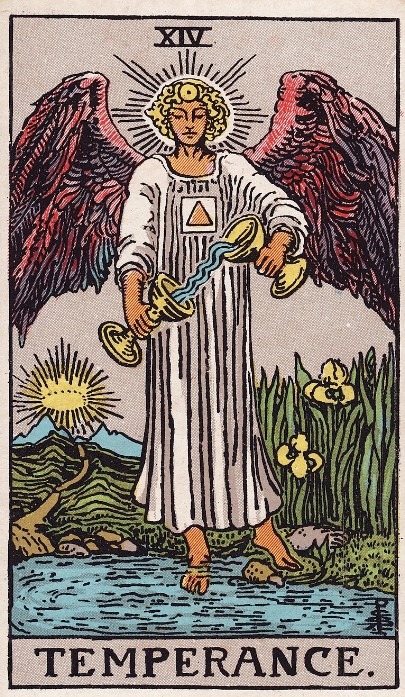
The temperance angel waits at the end of line 2. After the sights and sounds of death, and the initial fear it imposed, the fool feels relief. This card appears to offer hope and comfort, which he needs.
The second line has been hard. The fool has come face-to-face with the unconscious layer of his personality. His tiredness verges on exhaustion. Temperance, from the latin temperare which means to combine or blend, seems calm and assured.
A moment of respite.
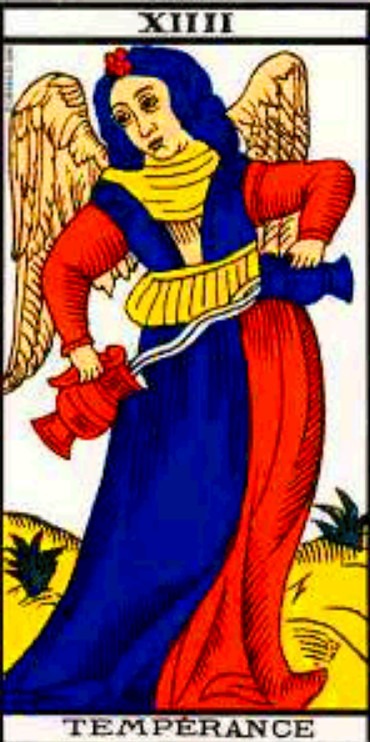
The fool first saw an angel in card 6, the lovers but this one is different. No more flaming hair or purple robes. The temperance angel is white and gold, with one foot on the land and the other foot in water.
Some say temperance shows Cassiel, while others disagree.
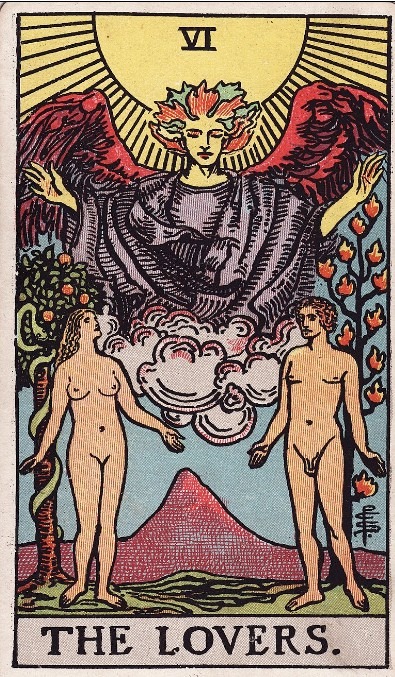
A. E. Waite described temperance as a winged angel… neither male or female.
Names are a human tradition. We like labels but they nearly always belong to different, often contradictory systems of belief. Universal consistency is rare.
Tarot works on the intuitive level of the high priestess. It’s taken the fool another 12 cards to begin to understand this. True knowledge and meaningful experience are less likely to be found on the surface. They relate more to what’s felt beneath.
Definitive names have less importance in the inner world of unconcious thought and action.
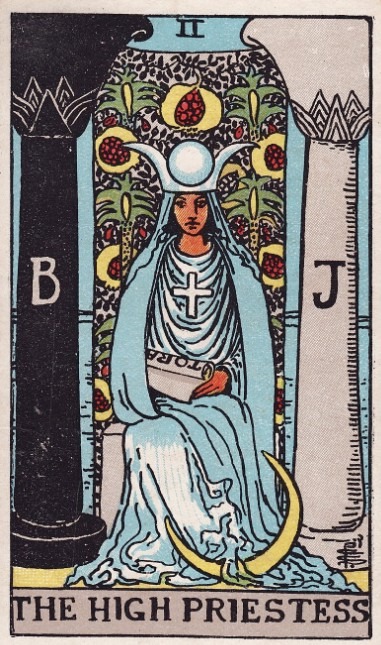
Having come to the end of his journey through his unconscious self, the fool realises the angel doesn’t need to be named. What the card represents matters more.
At the top of the gown are the hebew letters י-ה-ו-ה. The fool saw these on the wheel of fortune. They spell yhwh or yahweh, a name for god.
Below the letters, a triangle sits within a square, whose sides equate with the four material elements. The fool saw this in the cross carried by the high priestess and the square on the chariot.
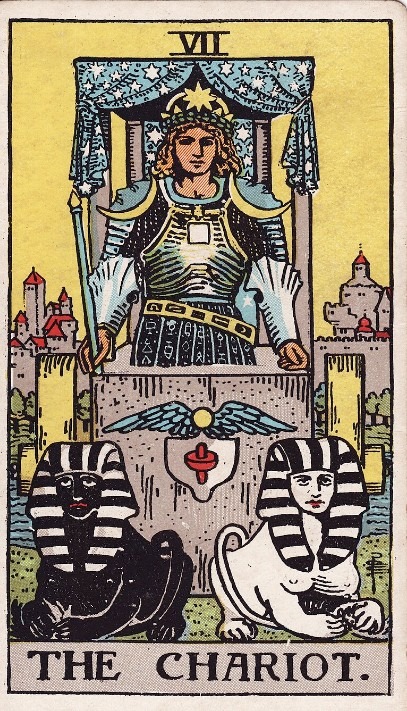
The chariot represented success in the physical world but, without inner knowledge, no further progress could be made. On temperance the square contains the triangle, the inner world of mind, body and soul, now visible and balanced within the elements.
The fool has made progress.
He takes a deep breath and studies the detail.
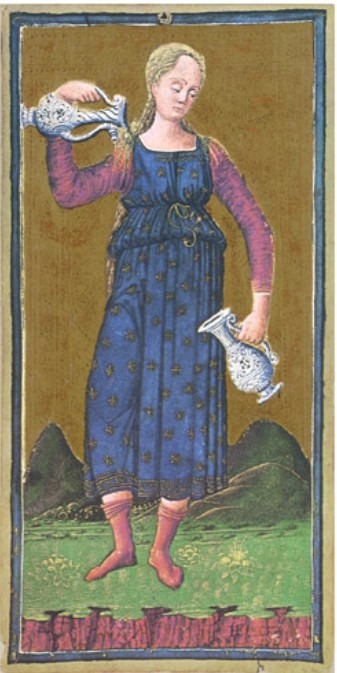
There’s open countryside. In the distance, the light of the sun is rising between two mountains. He’s reminded of the death card where the sun emerged between two pillars. This sun is higher in the sky and a direct path leads towards it.
The third row of the subconscious self still lies ahead but the way forward is clear.
Yellow irises grow by the river. The greek goddess Iris was the god’s messenger who travelled on rainbows. Her name derives from the greek for rainbow. Made from light and water, they are always beautiful.
In the Waite/Coleman Smith pack there’s no rainbow but the angel has a halo, as does the hanged man. It signifies divine spirituality.
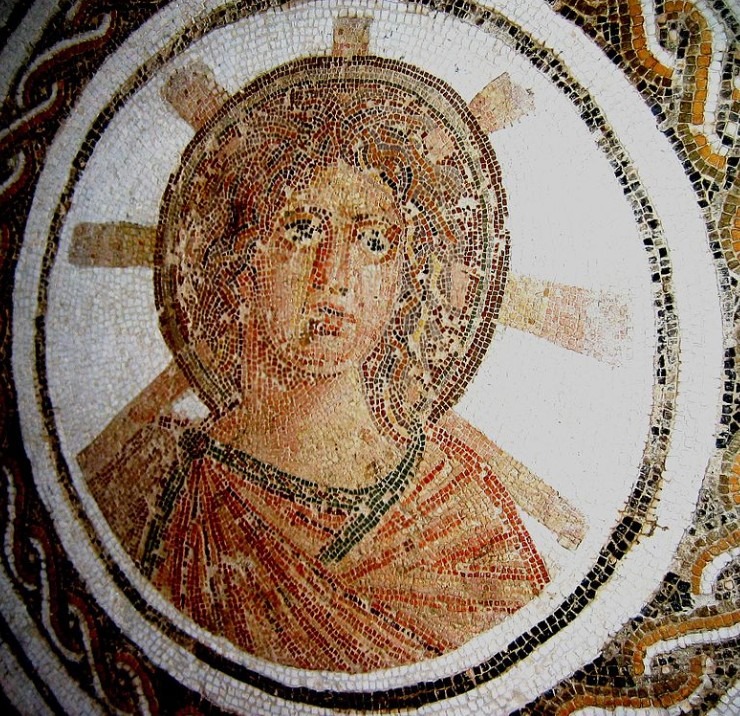
The angel has one foot in the river while the other stands on the land. Iris took water from the Styx in the underworld. It was used by Zeus to ensure the keeping of promises.
Water in the tarot is symbolic of emotions and inner awareness. It represents the world of the unconscious and temperance stands astride water and earth. The potential of water and the physical reality of earth have combined.
Guidance from the hermit and the serenity in the hanged man are now manifest.
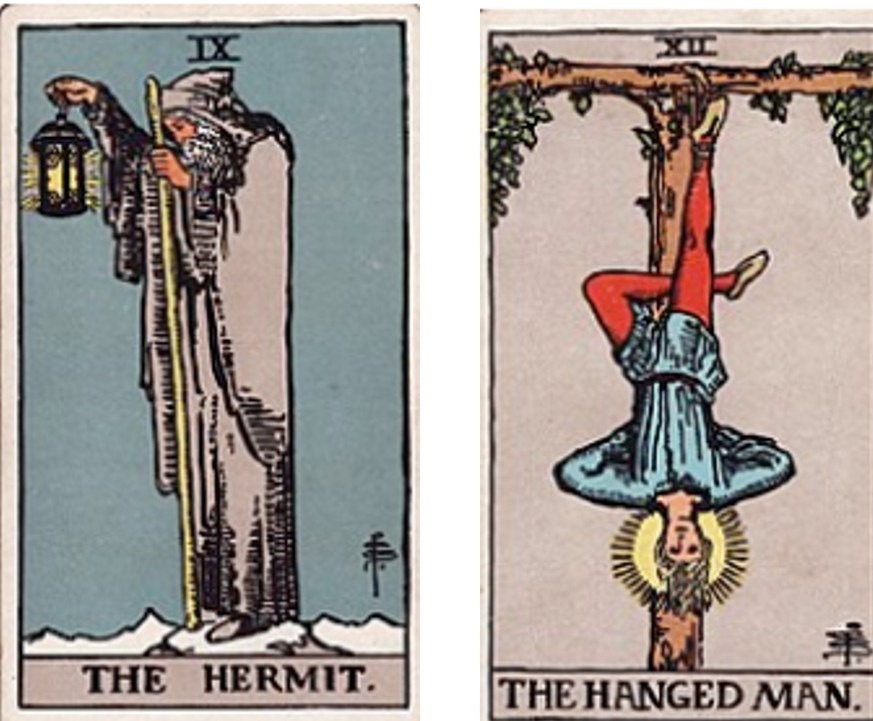
Temperance has absorbed the rainbow and become the promise. The lessons of death have been understood and incorporated.
The fool has learned death represents transitions. The old patterns loved by the ego have been abandoned so the inner self or light can appear.
Rainbows are symbolic of new beginnings and the temperance angel is the fool’s new day. He’s been reborn in the physical world and will not forget how this feels.
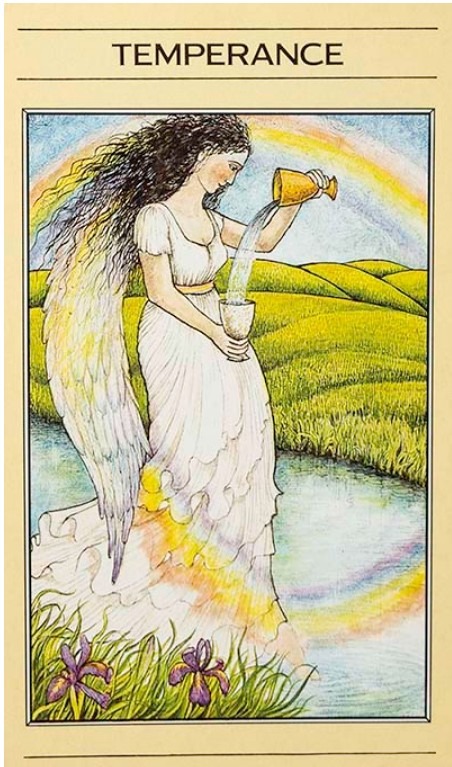
Everything about temperance can be related to integration and wholeness. Waite calls circle in the angel’s hair the sign of the sun. The dot in the centre is the alchemist’s symbol for gold.
The ultimate goal of alchemy was the transmutation of base metal to gold, which can be interpreted as finding divinity within the physical material body.
Aleister Crowley renamed temperance as art which stood for the art of alchemy.

The two cups contain water which flows between them. In older packs the cups are red and blue, or gold and silver, to emphasise the binary of conscious and unconscious selves.
Some say the slant of the water is impossible to achieve, but the angel shows it can be done. The two sides of the self are combined. Previous lessons now integrated.
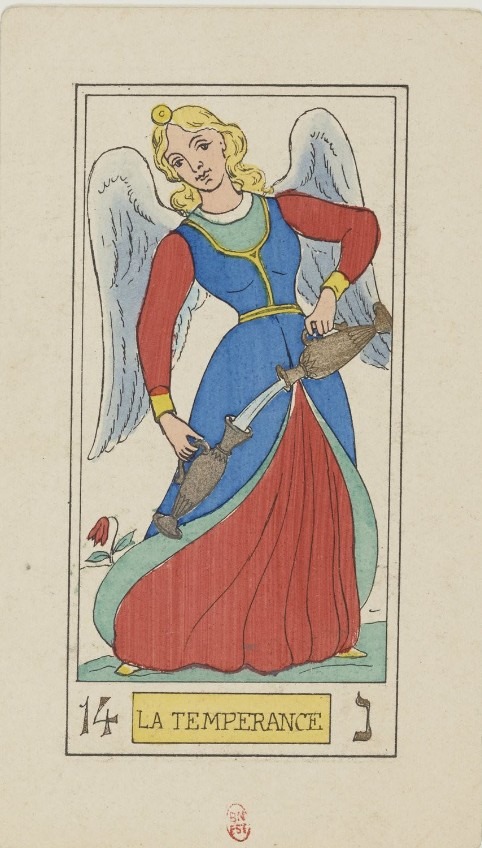
The fool had to withdraw from the world of conscious thought and action.
Nothing will ever be the same.
What was abstract has now become his new reality.
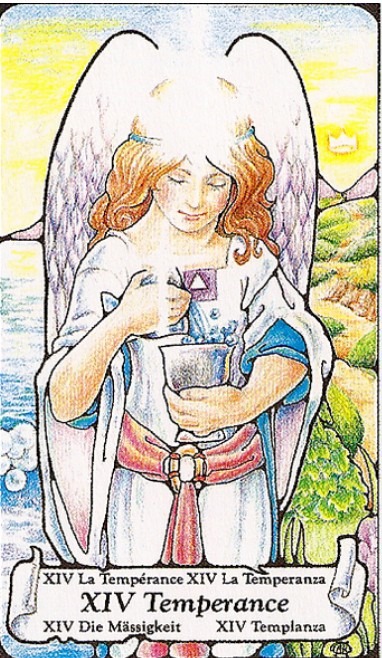
When the fool began his journey, he was naive. Not foolish but innocent.
The tarot hasbeen a walk of discovery.
There’s so much more to life than he realised.
Clues and symbols were all around him, but without a guide he had no awareness of their secrets.

The social structures of the first line had to be understood, not to change them but to become more self aware. There’s more than society allowed him to see. Even the scriptures and creeds of the hierophant were made by others.
The fool had to step away to find what really matters; the spark of divine life within, the shallowness and deception of desire, and how the fun loving ego desguises these as meaningful. He is learning how the ego fiercely guards access to inner awareness lest it diminishes its power.

Death required the fool to put ego to one side, to transform the energy of physical desire into a greater spiritual awareness. Not one without the other but together, combined.
The fool is ready to begin the final row of cards which represent his subconscious self. All he has learned so far will be needed.
The next card he meets is the devil.
Join us for the next step on the walk through the tarot.

images my own, copyright free from wikipedia commons or from https://pixabay.com/